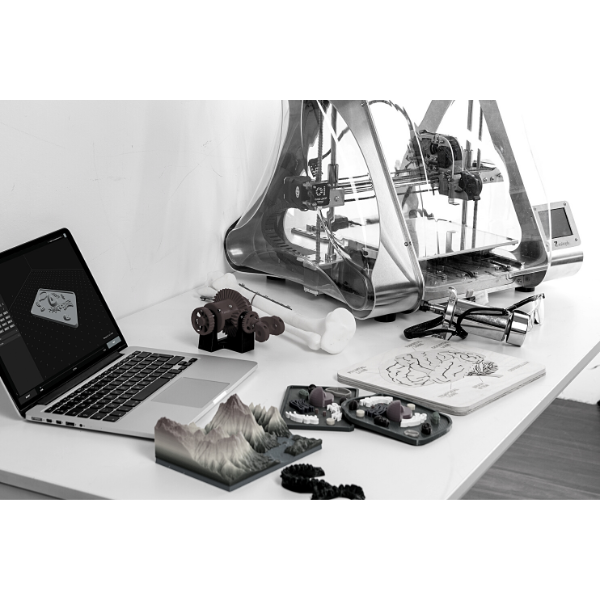| In this post we look at some of the most commonly used 3D printing file formats |
3D printing is a rapidly developing technology that is changing the way we produce objects. One of the first steps in 3D printing is to choose the appropriate file format for the 3D model you want to print. In this article, we will look at the main file formats used for 3D printing, including STL, OBJ, AMF and G-Code.
Contents
Each of these formats has its own unique characteristics and may be better suited for some types of projects than others. Knowing your options will help you choose the most appropriate file format for your next 3D print.
STL format
(“Stereolithography,” .STL file extension)
This is a 3D rendering that contains only one color. This is generally the file format that is used with desktop 3D printers. It is a triangular mesh file format that represents the geometry of an object so that it can be 3D printed.
OBJ format
(“Object”, .OBJ file extension)
This is a triangular mesh file format that is used for representing 3D objects in many 3D modeling software.
VRML format
(“Vermal,” file extension .WRL)
VRML stands for “Virtual Reality Modeling Language” and is a newer digital 3D file type that also includes color, so it can be used on desktop 3D printers with more than one extruder (i.e., two extra nozzles that can each print with a different color plastic) or with color binder jetting technology.
AMF Format
(“Additive Manufacturing File Format,” .AMF file extension)
AMF is a new open XML-based standard for 3D printing. Unlike STL, it contains support for color. In addition, it can be compressed to about half the size of a compressed STL file. Currently AMF is not widely used, but in the future we would like to add it as an option for uploading and downloading files to and from the NIH 3D Print Exchange.
It is a 3D printing file format developed to represent 3D objects in more detail than other formats so that they can be printed accurately.
GCode format
Another input file format for 3D printers is GCode. This file contains detailed instructions for the 3D printer to follow for each slice, such as the starting point for each layer and the “path” that the nozzle or print head will follow to lay down the material.
G-Code is generally generated by slicing software, which turns 3D models into instructions for the 3D printer.
Proprietary formats
3D printer manufacturers may have their own proprietary input file formats that contain instructions specific to the methodology of that make or model and that are compatible only with that manufacturer’s software. This does not create an obstacle to printing with these machines, since the proprietary file format is generated from the user’s STL or WRL file. Examples include the .form file, used with PreForm software for Form1 printers, or the .zpr format, proprietary to ZPrint and ZEdit software used with ZCorp inkjet printers.
